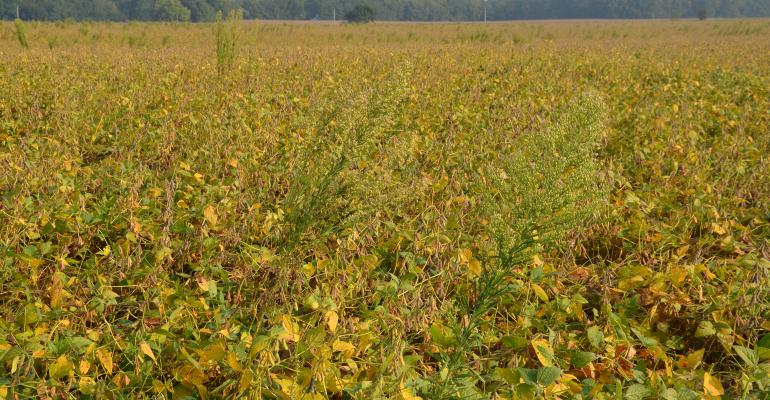You can still grow high-yield soybeans after soybeans

Soybean Pest Beat: Agronomists say this rotation takes more attention to details.
Dec 06, 2019
We’re going back with soybeans after soybeans on 500 acres due to changes in 2019. How can we prepare for this to avoid yield loss?
The panel of Indiana certified crop advisers answering this question includes Steve Gauck, Beck’s sales agronomist, Greensburg; Andy Like, Syngenta, Vincennes; and Jeff Nagel, Ceres Solutions agronomist, Lafayette.
Gauck: You can successfully raise high-yielding soybeans in a bean-after-bean environment if you’re willing to manage them. First, fertilize for high-yield soybeans and concentrate on potash levels. Apply enough fertilizer to replace what the previous crop removed and enough to cover your yield goals. Spring applications of potash and lime have shown good yield results.
Next, look at seed treatments. Be sure you’re using a strong treatment to cover diseases, insects and nematodes.
You’ll also need to change varieties. Don’t plant the same variety back to back on the same acres.
During the growing season, scout for insect and nutrient deficiency issues that could arise. Budget in a fungicide application at the R3 stage to help offset higher levels of disease inoculum in a bean-after-bean field.
Like: The primary concern would be yield loss from increased pest pressure due to the lack of crop rotation. These pests include soybean cyst nematode, sudden death syndrome, frogeye leaf spot, and weed pressure from waterhemp and Palmer amaranth.
Start your plan by selecting a variety that would offer above-average resistance to these diseases. Consider a plan that includes seed treatments and foliar fungicides that would control likely diseases in a nonrotated field.
Next, consider a robust residual chemical program that would counteract the increase in pigweed species weed pressure in a field that’s not rotated to corn.
Nagel: We’ve seen soybeans planted after soybeans with little to no yield penalty but have also occasionally seen significant yield reductions. When a loss occurs, it generally is due to disease. The field history of soybean diseases should be reviewed and planned for accordingly. Seed and seedling blights, SCN, SDS, white mold, and frogeye leaf spot are key diseases to focus on for management. Here is a closer look at factors to consider.
Variety selection. Select high-yielding varieties with the disease package needed. Unfortunately, varieties are changing rapidly with the various trait platforms, and some disease ratings may not be available or might be rated below average. Pay attention to disease ratings, or lack of, for 2020 varieties you’ll be planting.
Fungicide seed treatment. Use a sound fungicide seed treatment with the correct type and amount of active ingredient for diseases like phytophthora.
SCN and SDS. Consider using Ilevo or Saltro seed treatments to help manage SCN and SDS.
White mold. If conditions around the beginning flowering growth stage are cool and wet and white mold appeared in previous years, make an appropriate foliar fungicide treatment. Sporecaster is a university-developed app that can aid in making a fungicide application.
Midseason scouting. Scout for foliar diseases and pay attention to frogeye leaf spot. If these lesions are observed around R3 (beginning pod stage) to early R5 (beginning seed stage), make an appropriate foliar fungicide treatment.
Soil nutrition. In 2019, several fields demonstrated potassium deficiency in areas on the drier side. Maintain balanced nutrition for phosphorus and potassium on lighter soils. Assess potential need for sulfur.

